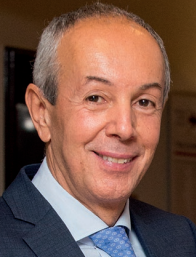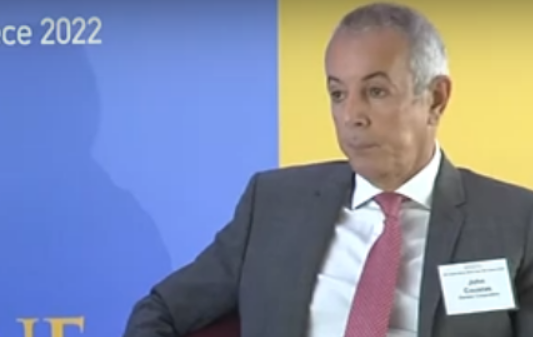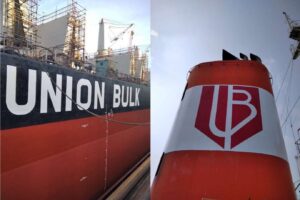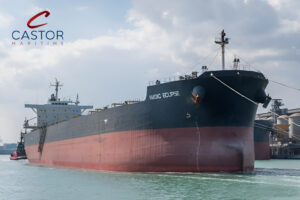
Photo credit: Danaos / CEO Dr. John Coustas
John Coustas-led Danaos Corp, a US-listed owner with a current fleet of 69 container vessels and many other container ships under construction, disclosed bulker acquisitions of three capesizes aggregating 529,704-dwt for $79.9m, with expected delivery to the company in June through July 2024.
In its earnings results on Tuesday the owner revealed that the capesize additions will bring the total number of its capesize drybulk fleet to 10 vessels, with an aggregate capacity of 1,760,861-dwt.
John Coustas added this year 4 additional 8,258 teu newbuildings to the company’s orderbook for an aggregate purchase price of $376.8m, with expected deliveries from the fourth quarter of 2026 through the third quarter of 2027.
During the last two months also took delivery of two container vessels under construction and named the vessels Interasia Accelerate and Catherine C.
Danaos has 14 container vessels under construction with an aggregate capacity of 107,946 teu. Two newbuilding vessels were delivered to the owner in April and May 2024, four vessels are expected to be delivered in the remainder of 2024, two vessels in 2025, three vessels in 2026 and three vessels in 2027.
Meanwhile the shipowner secured multi-year chartering agreements for all of its 14 newbuildings.
As a result of this chartering activity, over the past three months the company added around $423m to its contracted revenue backlog through the arrangement of new charters for 5 container vessels in its fleet and 8 newbuildings.
Danaos’ CEO Dr. John Coustas commented: “The container market continued to strengthen in the first quarter of 2024, a trend that has continued into the second quarter. Both charter and box rates are gaining momentum, and we have completed all necessary rechartering activity in excess of our internal forecasts. The renewed optimism in the market extends to the longer term view of the charterers, who are making charter commitments on newbuilding vessels with deliveries scheduled from 2025 through the end of 2027.
“Following the recent placement of an order for an additional two 8,250 TEU vessels for 2027 delivery, our newbuilding orderbook currently consists of 14 vessels, totaling 108,000 TEU, two of which have already been delivered to us.
“More importantly, we have now secured multi-year chartering agreements for all our vessels on order, while we have also extended charters of certain existing vessels. As a result of this chartering activity, over the past three months we have added $423 million to our contracted revenue backlog that today stands at $2.5 billion with an average charter duration of 2.9 years.
“All the vessels in our newbuilding orderbook are Methanol ready, future proofing a portion of our fleet on green fuel usage. We have also arranged very conservative financing for the first eight newbuildings at competitive rates to ensure that we are able to maintain a strong liquidity profile to support continued opportunistic fleet expansion.
“In our drybulk vessels segment, we have added an additional Capesize vessel to our fleet, increasing our fleet to 10 vessels in total. We are continuing to explore ways to increase our exposure to this market. The drybulk market has performed above expectations, and we are confident that an eventual Chinese recovery will drive the market higher. Our entry point into the dry bulk market is relatively low, and our breakeven is therefore easily achievable.
“Despite geopolitical uncertainties, most of the economies around the world are performing relatively well and are displaying no signs of recession. The biggest risk to our market outlook comes from trade hurdles that various countries are putting in place in the form of tariffs and trade restrictions on energy as well as manufactured goods. Despite the positive short-term impacts of these practices, we believe they will ultimately result in trade contraction in the long term.
“In the meantime, our strategy has continued to result in consistent solid results. We will continue to explore growth opportunities while ensuring the longevity of our investments for the benefit of our shareholders.”



